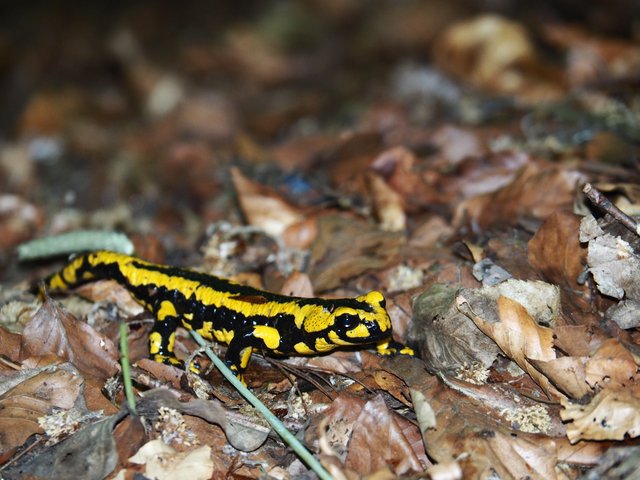Do you know Salamander?

The spotted salamander or Salamandra is a urodel of the family Salamandridae.
A urodel is an amphibian that moves on all fours and retains a tail as an adult.
The vernacular name "spotted salamander" can also be attributed to other species or subspecies of the genus Salamandra which also have a mottled pattern.
The spotted salamander we are talking about today is one of the most recognizable and widespread amphibians in Europe.
The spotted salamander is aptly named because it bears yellow / orange patches. These patterns can be dots or lines.
But, be careful, there is no question of looking like your neighbor: each individual has a unique pattern that identifies them.
These spots are more noticeable because the skin of the spotted salamander is black, smooth, and oily in appearance.
There are quite rare variations where the specimens have almost reddish orange spots.
However, don't expect an imposing animal, it measures up to 8 inches, and weighs up to 40 grams, a small size!
Do not confuse the larva of the newt with that of the salamander! Salamander larvae have yellowish spots at the base of the legs.
Its movements are slow and not very agile compared to the wall lizards that can be seen in summer.
Fortunately, salamander doesn't have any serious predators. However, you can never be too careful: it remains hidden during the day in cavities of dead wood or under stones.
If a stubborn predator tries to make it her meal, she secretes (produces) a neurotoxin from her parotoid glands on her head: samandarin.
Don't panic, it's not toxic to humans.
In the event of an accident, it has the ability to regenerate lost or injured limbs.
The Spotted Salamander is active from February to November and overwinters the rest of the time alone or in groups.
Its wintering places can be those it uses during periods of activity such as under stones,
It lives mainly in wooded areas, deciduous or mixed forests, especially if the soil is quite moist.